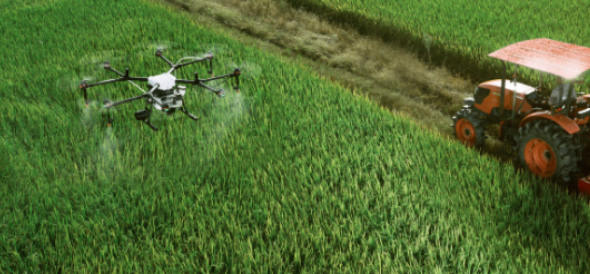As an emerging technology, artificial intelligence (AI) offers a lot of potential – as well as risks – for Australia’s agricultural sector.
This article details three ways to harness AI that could transform your farming operations.
How demands on farmers are changing
The UN predicts global population to reach 9.8 billion by 2050, with one in three facing food insecurity. Over 600 million may suffer hunger by 2030. Australia’s agriculture sector faces workforce decline; AI could be key to transforming it, addressing climate change, and ushering in the fourth agricultural revolution.
AI is being harnessed not just for precision agriculture, remote sensing, robotics, apps, drones, and big data, but also to tap indigenous knowledge and understanding. For example, CSIRO and technology company Wipro say AI-powered tech could boost productivity if used for:
- Harvesting
- Seeding
- Soil tillage and monitoring
- Crop monitoring, yield prediction, and forecasts
- Disease diagnosis
- Weed and pest removal
- Chemical application, including fertilisers, herbicides, and pesticides.
- Data analytics to improve prediction.
Monitoring livestock health
AI, like CattleEye, employs machine learning and drones for real-time monitoring of livestock health, behaviour, and environmental conditions. This technology enhances efficiency, reduces costs, and has potential applications in sheep facial recognition for breeding optimisation.
Intelligent pesticide application
AI-powered drones, equipped with computer vision, revolutionise pesticide application by offering speed and precision. Farmers benefit from reduced chemical use (up to 80%) as drones identify and target small, easily overlooked weeds.
Crop yield predictions
AI, machine learning and big data can help take out some of the guesswork about price fluctuations. Drawing on satellite imagery and weather information means this tech can, in real-time:
- Assess farmlands
- Monitor crop health, such as through hyperspectral imaging and 3D laser scanning
- Detect disease and pest infestation
- Estimate crop output and yield forecast prices, such as for tomatoes, which typically has unstable pricing
- Guide farmers and governments on price trends and patterns.
- Offer evidence-informed approaches on demand level, crop types to sow to optimise benefits and pesticide applications, etc.
Learn how AI helps track bees to build a picture of pollination behaviour over a farm, or check our CSIRO’s Graincast platform.
The last word
Embrace agricultural AI but beware of risks, particularly concerning big data use in pricing by agribusinesses. Prioritise inquiries about data policies and cybersecurity when adopting AI tech. Regularly update insurance policies to cover emerging risks.

